Some songs explode into the culture and never quite leave, even if their creators slip from the charts just as quickly. Not every chart-topper gets a second act – but some absolutely should have. These 19 one-hit wonders may have faded from the airwaves, but their songs remain proof that lightning can strike once – and sometimes, once is all it takes. Dive back in and you might discover artists whose catalogs are richer, stranger, and more rewarding than their single suggests.
1. Soft Cell – “Tainted Love” (1981)
Soft Cell’s reimagining of a 1964 soul tune turns heartbreak into a cold, neon confession. Marc Almond’s voice trembles between menace and vulnerability, while the drum machine ticks like a distant heartbeat. Beyond the single, Non-Stop Erotic Cabaret dives into urban decadence, queer desire, and synth-pop minimalism with literary bite. “Say Hello, Wave Goodbye” and “Bedsitter” show their knack for kitchen-sink drama, set to chrome-plated electronics. The band’s sound helped define a darker strain of ‘80s pop, where subtext becomes the main text. Revisiting the album reframes “Tainted Love” as part of a broader narrative about isolation and longing. It’s not just a club staple; it’s a gateway to pop with undercurrents of grit, glamour, and guilt.
2. Gotye feat. Kimbra – “Somebody That I Used to Know” (2011)
“Somebody That I Used to Know” felt like a ghost in the radio – spare, percussive, and emotionally forensic. But Gotye’s catalog rewards patience: sample mosaics, odd instruments, and rhythms stitched with meticulous care. “Eyes Wide Open” and “State of the Art” showcase his painterly approach to sound design, where each texture serves narrative. His collaborations and visual experiments expand the story beyond one breakup anthem. Kimbra’s spectral counterpoint doesn’t just answer; it reframes the argument, hinting at multiple truths. Revisit Making Mirrors to hear how folk fragments, art-pop structures, and global percussion cohere. This is pop as collage, personal yet exploratory. If the single haunted you, the album will pull back the curtain on the architect behind the apparition.
3. Dexys Midnight Runners – “Come On Eileen” (1982)
“Come On Eileen” is exuberance bottled: fiddle runs, street-soul shouts, and cathartic key changes that feel like sprinting down cobblestones. Yet Dexys were always more than dungarees and a single chorus. Too-Rye-Ay threads Celtic instrumentation with horn-driven soul, led by Kevin Rowland’s urgent, unvarnished delivery. Deeper cuts like “Until I Believe in My Soul” reveal a bruised romanticism and theatrical ambition. The arrangements are lean yet muscular, designed for communal release. Their obsession with image and reinvention forecasts later art-pop shapeshifters. Revisit the album to hear a band balancing grit and grandeur, sentiment and swagger. Beyond the wedding-dance classic lies a heartfelt manifesto about authenticity, community, and the stubborn, ecstatic pursuit of transcendence.
4. Blind Melon – “No Rain” (1992)
Behind the bee-girl myth is a band steeped in rootsy eclecticism and psychedelic swirl. “No Rain” introduced Shannon Hoon’s keening voice, but Soup and the self-titled debut reveal deeper textures: slide guitars, ragged harmonies, and jammy dynamics that never drift into indulgence. “Galaxie” and “Mouthful of Cavities” showcase their empathy and melodic instinct. The group’s chemistry – loose yet precise – feels like front-porch conversation turning confessional. Tragedy truncated their arc, freezing them in ‘90s amber. Returning now, you’ll hear a band quietly threading folk, blues, and alt-rock into something gentle yet insistent. The hits endure, but the albums hum with lived-in detail and vulnerable curiosity, reminding us how fragile and luminous a moment can be.
5. The Verve Pipe – “The Freshmen” (1996)
“The Freshmen” distilled mid-’90s angst into a narrative confession, its refrain both apology and absolution. But the band’s catalog leans into dynamic guitar pop and literate storytelling. Villains balances crunch with melody, while later releases refine their tuneful melancholy. Brian Vander Ark’s voice carries a plainspoken ache, sharpening lyrics that linger after the chorus fades. “Photograph” and “Cup of Tea” reveal arrangement chops beyond acoustic sorrow. The group’s live shows stretch songs without sacrificing hooks, suggesting a craftsman’s focus over flash. Revisit them for earnest rock that resists cynicism, favoring empathy and detail. If you came for the catharsis, stay for the balance of muscle and restraint—the sound of growing up without numbing out.
6. A-ha – “Take On Me” (1985)
As synth-pop perfection, “Take On Me” still sounds like a love letter to momentum, each drum fill springing forward as that iconic chorus punches the sky. A-ha were never truly one-and-done, especially in Europe, but this U.S. smash became their defining calling card. The rotoscope video remains a landmark of music-video storytelling, bridging comic-book fantasy and breathless romance. Revisit their album Hunting High and Low and you’ll find cinematic songwriting, gleaming keyboards, and Morten Harket’s elastic range anchoring it all. Tracks like “The Sun Always Shines on T.V.” prove the band could match scale with emotion. If “Take On Me” is the gateway, the deeper cuts reveal a group fluent in hooks, drama, and sleek Scandinavian melancholy.
7. Baha Men – “Who Let the Dogs Out” (2000)
It’s easy to dismiss this earworm as pure novelty, but its DNA mixes Bahamian junkanoo and global party rhythms into a lively snapshot of 2000. The chant’s origin story is tangled, yet the percussive breaks and whistles carry local tradition into mainstream pop. Revisit the group’s catalog and you’ll hear vibrant horn stabs, polyrhythms, and call-and-response built for communal release. Beyond stadiums and sports arenas, it’s a cultural time capsule of Caribbean festivity meeting modern production. Tracks like “You All Dat” keep the dancefloor in motion with unpretentious joy. Sometimes durability looks like collective memory. Let it play, and you might hear more than a meme – an unapologetic celebration engineered for movement and smiling chaos.
8. Chumbawamba – “Tubthumping” (1997)
What sounded like a pub singalong was a Trojan horse for radical politics. Chumbawamba’s catalog spans anarcho-punk, folk protest, and sardonic pop experiments, making “Tubthumping” an outlier and a statement. The chant of resilience cloaks critiques of power structures, advertising, and media spectacle. Albums like Anarchy and WYSIWYG blend satire with melody, proof that catchy and confrontational can coexist. Their live shows often blurred performance art and activism. Revisit the band to hear how wit and moral clarity spark genuine hooks. “Amnesia” and “Enough Is Enough” reveal their broader toolkit. The hit’s ubiquity hid a discography interested in dismantling complacency – one bounce-along chorus at a time.
9. Right Said Fred – “I’m Too Sexy” (1991)
Beneath the wink and strut lies sharp satire skewering fashion-world vanity. The brothers’ minimalist funk and bass-forward production gave the joke real muscle, making the groove irresistible. Beyond the single, their catalog offers playful hooks and sly commentary on image culture. “Don’t Talk Just Kiss” proves their instincts for campy melodicism. Revisit the track as a time capsule of early ‘90s club culture where irony and earnestness mingle under mirrorballs. The rhythm section remains tight, the deadpan delivery deliciously dry. It’s proof that novelty can be engineered with craft – economical arrangements, sticky refrains, and a concept that still struts decades later. Style fades; a perfectly cheeky bassline does not.
10. Big Country – “In a Big Country” (1983)
Those bagpipe-like guitars weren’t a gimmick; they were an ingenious use of e-bows and effects to evoke Scottish folk without losing rock punch. Big Country’s debut, The Crossing, is full of widescreen optimism, martial drums, and resilient melodies. Stuart Adamson’s writing embraces hope without naivety, turning arena-scale choruses into communal rallying cries. Deeper cuts like “Chance” and “Fields of Fire” balance brawn and tenderness. The band’s sound sits between U2’s grandeur and folk-rock grit, yet feels distinct. Revisit to hear how technology and tradition can dance together. The single might be the vista, but the album explores the valleys and hills, mapping courage and doubt with ringing clarity.
11. The Cardigans – “Lovefool” (1996)
“Lovefool” glitters with sugar, but The Cardigans mastered the bittersweet. Beyond the hit, First Band on the Moon and Gran Turismo reveal an outfit equally fluent in lounge-pop shimmer and guitar-driven noir. Nina Persson’s cool delivery masks lyrical bruises, while the band’s arrangements slip between bubblegum and melancholy with sly finesse. “My Favourite Game” snarls with propulsion, proof they’re not just pastel dreamers. The production is pristine yet human, a hallmark of Scandinavian pop craft. Revisit their albums and you’ll find a band navigating desire, doubt, and danger in glossy frames. It’s the rare act that makes heartbreak sound effortless – and dangerously catchy.
12. Natalie Imbruglia – “Torn” (1997)
“Torn” feels like a Polaroid in motion: crisp acoustic strums, aching melody, and intimate pop-rock clarity. Knowing it’s a cover only deepens appreciation for Imbruglia’s interpretation – light as air, heavy with subtext. Left of the Middle offers more luminous mid-tempo gems, balancing radio sheen with understated vulnerability. “Smoke” and “Big Mistake” showcase elegant dynamics and careful phrasing. The production’s restraint lets her voice carry the emotional weight without sentimentality. Revisit to hear how arrangement nuance – snare brush, guitar chime, whispered harmony – creates a timeless texture. The single wasn’t an accident; it was the summit of a carefully crafted emotional landscape that still invites repeat climbs.
13. Fountains of Wayne – “Stacy’s Mom” (2003)
Dismiss the punchline and you’ll miss master craftsmen at work. Adam Schlesinger and Chris Collingwood wrote power-pop with surgical precision: crunchy guitars, bittersweet bridges, and lyrics that play like short stories. Welcome Interstate Managers is loaded with scene-setting gems – “Hackensack,” “Valley Winter Song,” “Mexican Wine” – each melody glued to vivid detail. The band’s wit never undercuts feeling; it sharpens it. Their harmonies sparkle, drums snap, and choruses arrive like postcards you’ll keep. Revisit to hear songcraft hiding in plain sight, a jukebox of suburban epics and office blues. “Stacy’s Mom” is the gateway; the catalog is the canon. Power-pop rarely hits this clean, clever, and emotionally resonant.
14. Semisonic – “Closing Time” (1998)
A barroom farewell that doubles as a birth announcement, “Closing Time” carries warmth beneath its singalong veneer. Dan Wilson’s songwriting prizes clarity, kindness, and sturdy melody, qualities that run through Feeling Strangely Fine. “Secret Smile” and “Singing in My Sleep” deliver equally hummable choruses with thoughtful storytelling. The band’s arrangements are tasteful – sparkling guitars, patient dynamics, unshowy hooks. Revisit to hear how good manners in songwriting can still break your heart. Wilson’s later success writing for others validates the craft you can already hear here. It’s music that gives you a hand on the shoulder at 1:59 a.m., guiding you toward the night air and new beginnings.
15. The La’s – “There She Goes” (1990)
Jangly and deceptively simple, “There She Goes” is a melody you could hum forever. The La’s self-titled album carries a mythic aura: painstaking sessions, endless retakes, and a singular pursuit of purity. Lee Mavers sought an elusive sound that lands between Merseybeat classicism and Britpop’s dawn. The result is crystalline guitars, tight rhythms, and melodies that feel inevitable. Dig beyond the hit for “Timeless Melody” and “Way Out,” where economy meets euphoria. The band’s scarcity only amplifies its influence – Oasis, Travis, and countless indie acts absorbed that chiming DNA. Revisit to hear perfectionism distilled into breezy weightlessness, a paradox that still shimmers.
16. Joan Osborne – “One of Us” (1995)
Osborne’s breakout asked cosmic questions in a conversational voice, grounding the divine in bus commute imagery. Relish blends blues, gospel, and modern rock with Rick Chertoff’s spacious production. Her voice – grainy, flexible, deeply humane – carries standards and originals with equal conviction. “St. Teresa” and “Right Hand Man” showcase storytelling that crackles with lived-in detail. Revisit the album to find a singer who treats big ideas with humility and tactile texture. The arrangements breathe, letting guitars snarl and organs sigh. It’s a ‘90s artifact that sidesteps irony, pointing instead toward empathy and wonder.
17. A Flock of Seagulls – “I Ran (So Far Away)” (1982)
Yes, the hair was epic, but the music is bigger: shimmering guitars, delay-drenched leads, and a motorik pulse. “I Ran” defined synth-pop’s extraterrestrial yearning, yet “Space Age Love Song” arguably perfects their formula – sleek, romantic, and airborne. The band balanced hooks with texture, letting chorus guitars bloom like solar flares. Revisit to hear how their sonic architecture influenced later dream-pop and indie electronics. The production still feels aerodynamic, all chrome edges and starfield reverb. Behind the meme lies a group fluent in atmosphere and ache, turning dance floors into launchpads.
18. The Buggles – “Video Killed the Radio Star” (1979)
The Buggles predicted a media future while crafting a perfect pop pastiche – retro harmonies, futuristic synths, and whip-smart arrangement. Their album The Age of Plastic continues the technicolor critique, with “The Plastic Age” exploring identity and mediation. Trevor Horn’s production prescience reshaped ‘80s pop far beyond this single. Revisit to trace the blueprint: stacked vocals, gleaming keyboards, and rhythm tracks that snap with clinical charm. It’s satire you can dance to, a thoughtful wink at technology’s seductive glare. The songs hold up because the craft is meticulous and the ideas keep catching up to us.
19. Right Said Fred – “I’m Too Sexy” (1991) [Alt Spotlight: Bassline Craft]
Strip the smirk and study the chassis: a rubbery bassline, crisp drum pattern, and negative space doing heavy lifting. This track’s endurance isn’t accidental; it’s a masterclass in arrangement minimalism where each element earns its keep. The vocal is a runway monologue, but the groove sells the satire, making fashion commentary nightclub currency. Revisit alternate mixes to appreciate how subtle changes reshape attitude. The wider catalog leans clever and hooky, but this single remains the apex of less-is-more pop engineering. In an era of maximalism, its restraint still feels audacious and cool.






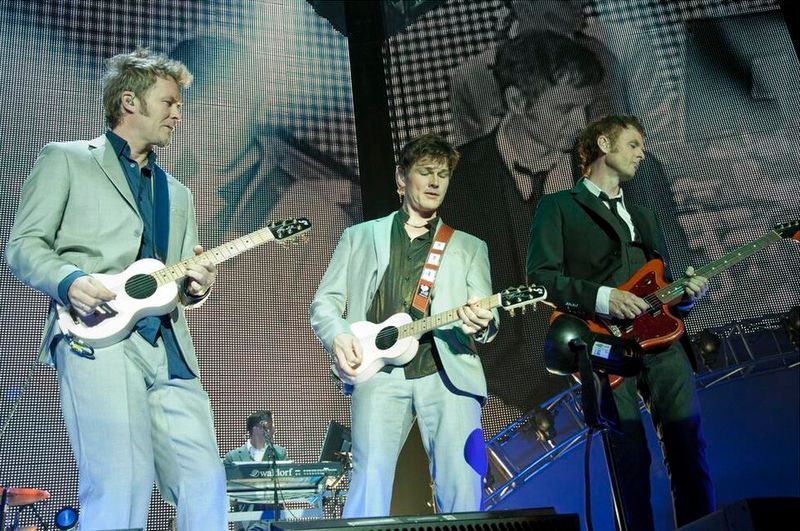
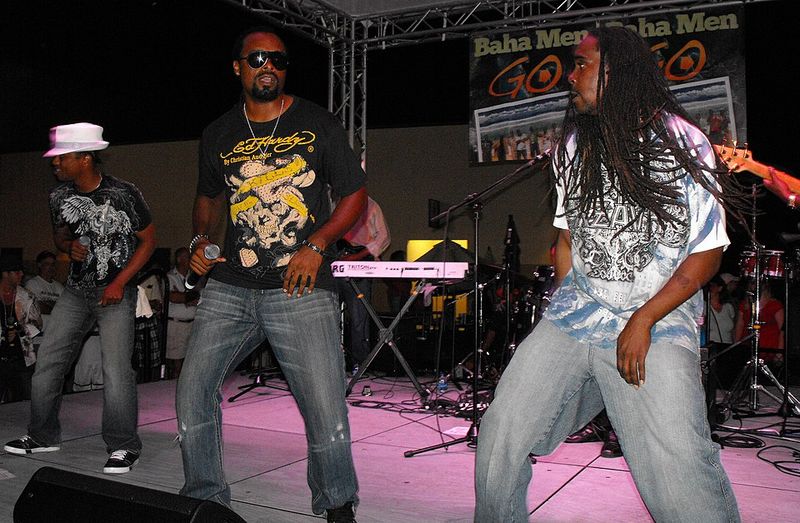



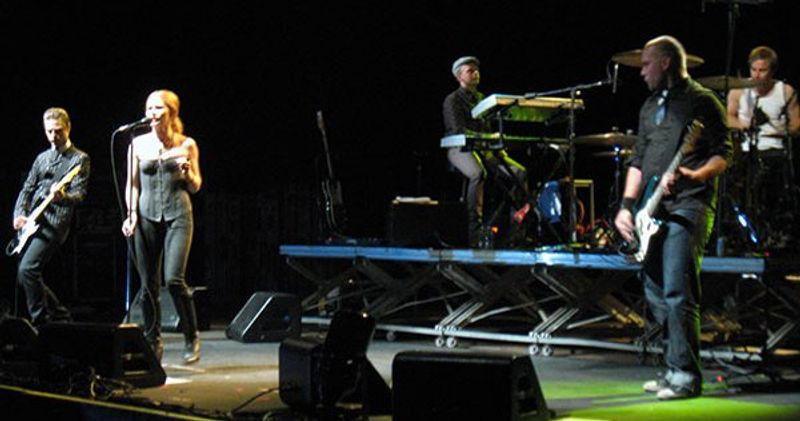





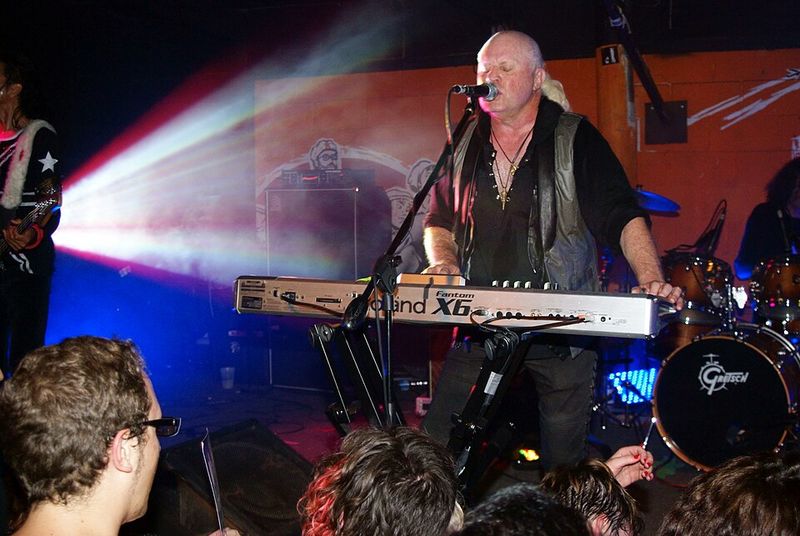
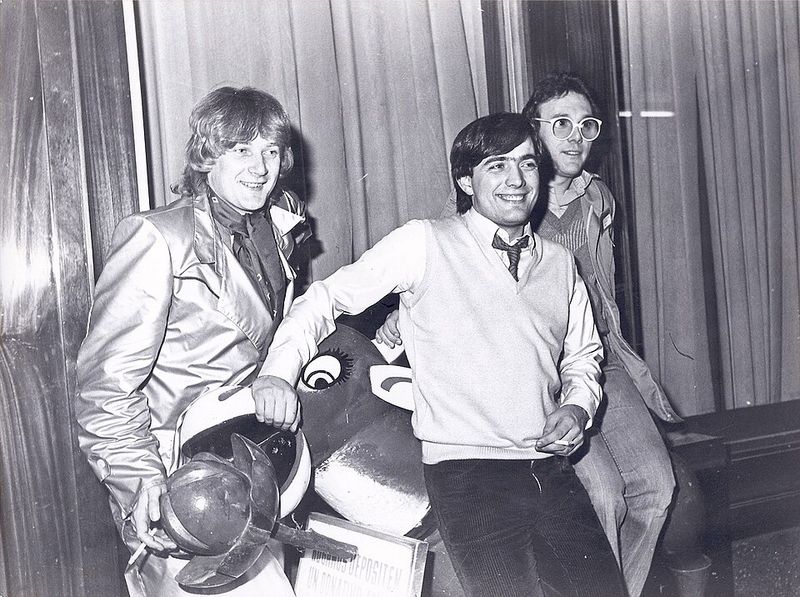
![Right Said Fred – “I’m Too Sexy” (1991) [Alt Spotlight: Bassline Craft]](https://unearththevoyage.com/wp-content/uploads/2025/11/The-Buggles-–-Video-Killed-the-Radio-Star-1979.jpg)



